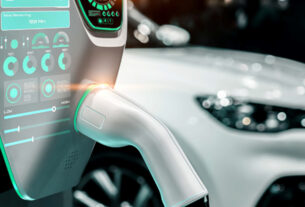In this detailed interview with Dhiyanesh Ravichandran, Mr. Mohan Satyranajan, CEO, Taqanal Energy, takes us through the vision of his company and how he and his team plan to transform the field of energy storage management globally

Mr. Mohan Satyranajan, CEO, Taqanal Energy
Let’s start with a brief intro of your company, product offerings, and revenue models. Why have you entered this field and what potential / opportunities do you see?
Taqanal Energy is an early-stage start-up based in Bangalore. Taqanal Energy is driven by the vision of transforming global energy storage management.
With the growing concern on climate change and depletion of fossil fuels, there is a definite shift to e-mobility for transportation and renewables for energy generation. This has given rise to development of energy-dense chemistries like Lithium ion that are now getting established. Concomitant with this development is the need to develop solutions for safe and efficient management of energy storage.
When we searched for existing solutions and discussed with customers, we realised that adoption of these technologies and the transition to e-mobility is still constrained by valid concerns that customers have that are: 1) Anxiety around range / uptime; 2) Concerns on life and safety of operation; 3) Costs of operation since batteries and chargers are expensive assets.
We then looked at the issues and built solutions that substantially increasing range of operation by optimising battery performance, enhancing life of the batteries while ensuring safety as well as enabling shareability of the expensive assets. All of these will result in reduction in both capex and opex of e-mobility.
Taqanal has developed a robust, modular software-defined battery management system (BMS) with features that are best in class at affordable prices. These BMS are paired with our telematics units to connect these batteries to the Cloud where we have developed a full suite of applications to enable business models like EVaaS, Battery as a Service, swapping/ leasing, etc.
Also, using algorithms-based machine learning and artificial intelligence technologies, we look to provide inputs to batteries in service to extend range of operation and life.
All our solutions are architected for interoperability with third party BMS’, telematics units or customers’ private cloud also. Our revenue model is based on sales of our BSM and telematics units as well as license fees for or cloud services.

With EVs gradually gaining traction in India, what is the scope for smart and cloud-connected battery management systems and service providers at present? Technology wise, give us a brief on remote battery management – its scope and possibilities in addressing some of the key challenges of battery efficiency, charging cycle, and driving range.
Challenge of managing EV batteries: Modern EV batteries are quite complex. They are typically built using a large number cells, in series and parallel to meet the power and energy requirements of the EV. Degradation of a single cell can make the battery underperform. Cells heat-up during charging and discharging. The temperature distribution inside a battery needs to be monitored. Demands from the Motor/ Controller change rapidly depending on the traffic condition. In this complex interconnected system, every small event is of importance. Consequently, all sensors need to be monitored frequently (some more than others).

Longevity and safety are crucial factors for an application involving battery packs (EV or other applications). Even though the SoC, SoS, SoH of a battery provides us with a reasonable estimate of remaining charge, battery life/ remaining useful life, the application- specific longevity and safety has been proven to be deviating from it. As the complexity of the battery pack increases with sophistication of the application (as in passenger cars & trucks, it gets more difficult to predict the longevity and safety of the same). In a world used to reasonably accurate guidance in ICE vehicles, this should be the minimum expectation from EVs.
Need for processing battery data: Large amount of data is generated by the battery. Memory storage in a battery is limited, and data over long periods of time is needed for the algorithms to draw meaningful conclusions. As the EV can be on the move, the only option is to use a wireless solution to send data from the battery to the entity that would analyse it. Every battery, every vehicle on the road, whether charging or in service, whether stationary or mobile has data to send all the time.
Remote management architecture: The contemporary practice to deal with such data is to use the cellular network to send all (pre-processed) data to a datacentre (Cloud). In the cloud the data is processed using the algorithms designed to extract insights from the data (machine learning algorithms). Data from every connected vehicle arrives continuously, and it is correlated with past data from the same vehicle, and historical data from other vehicles. Multi-dimensional correlations can identify relationships, and trends that cannot be detected using conventional techniques of data processing.

Estimating life and safety: By performing an analysis of historical data coming from the Battery Management System (SoC, SoH, SoF, Cell wise voltages, current, temperatures, charging statistics, discharging statistics), from the vehicle (driving conditions), and correlating them with results from other batteries, ‘Longevity’, and ‘State of Safety’ can be better estimated.
Longevity: The energy put in and extracted, itself changes (dynamic capacity) with the usage pattern. This in turn shortens/ lengthens the per-cycle throughput of the battery pack. This in effect results in increasing/ decreasing the cycle number in comparison with the SoH- estimated figure.
Safety: The recent incidents with EV battery pack explosions (explosion even with parked EVs) in China has forced the battery community to think and take necessary steps to avoid such mishaps. Safety incidents occur largely due to the imbalance between the cells in the battery pack. This could be judged with close monitoring and also with prediction of such events with help from the “digital-twin”. Continually/ periodically updated models (based on recent sensed data) would be used to predict such events.
The accuracy of the estimates increases over time with use of Machine Learning models that improve by processing more, and more data. Such an approach as described further enables very high degree of visibility into every aspect of the battery performance, and lifecycle. These include accurate predictions of several parameters of high interest, that cannot be measured or estimated without these techniques.
Thus, we strongly believe that with e-mobility gaining ground, high quality performance will require smart-connected batteries with remote management of batteries.
What sort of business models are already in place in the domestic market in this regard? What are the new models emerging?
The e-mobility space is admittedly is in its nascency in the country so there are a number of emerging business models, all of which are being experimented with. Since the vendor ecosystem and supply chain has yet to develop with many developing on Some OEMs are planning on inhouse manufacture of batteries. Some battery makers have been looking at developing their own BMS and there a few independent entities developing BMS and connectivity solutions.
At this time there are a number of players setting up facilities for manufacture of e2ws and e3ws as well as a number of announcements on potential newcomers into the industry. The passenger car majors have launched many EV models some of which are doing well.
It is difficult to predict the structure of industry in the e-mobility space in the medium term. It is possible that a few quality players in different verticals will emerge as the markets get more sophisticated and customer expectations grow.
OEMs or end-users – to whom is these business models oriented towards?
Taqanal’s solutions and offerings are aimed at the following segments-
- Battery pack-makers
- Tier-1 OEMs with whom we co-create the designs. These OEMs might look to develop the battery packs inhouse and source BMS, connectivity solutions from us
- Backup storage devices
- Rideshare companies and last-mile delivery logistics companies looking for battery swapping/ easing solutions
Which are the EV segments that have higher scope and potential in this regard?

In our opinion e3ws for last mile connectivity and shared rides will have a definite purchase provided we enable EVaaS and BaaS solutions to bring down costs of operation. The other areas could be delivery logistics providers or e2ws and small e-cargo vehicles as also urban sanitation service providers using either e3ws or e4ws. These segments would be the ones with the highest potential. It is possible that between 25-30% of the e2ws and e3ws might move to becoming EVs by 2025.
Adoption of e-mobility would follow in passenger cars and heavy vehicles with a lag.
How can techno-business models like Battery-as-a-Service (BAAS) and EV mobility-as-a- Service (EMaas) be adapted in Indian context? What is your company’s strategy in this regard?
Taqanal believes that acceleration of e-mobility will be greatly enabled by business solutions like EVaaS and Baas (battery leasing/ swapping). This would be especially relevant for e3ws and small e-cargo vehicles where these would lead to dramatic lowering of operating costs.
Taqanal has developed a full suite of solutions for deployment and we are working on a few pilot programs with some OEMs/ service providers to establish the same.
Who are your key partners (battery suppliers/ tech partners, if any) and target customers (OEMs, EV tech start-ups, vehicle users..) with regard to cloud-based remote battery management?
Taqanal has an MoU in place with CECRI, the premier research institute on electrochemistry in the country for research into advanced cell chemistries and battery management for the same. In addition, we have arrangements in place with a leading ODM player for manufacture of the BMS hardware.
While we have a number of projects with OEMs/ delivery providers, some live and others at a preliminary stage in respect of connectivity solutions and BMS. However, we cannot reveal the names for reasons of confidentiality.
Your immediate investment and expansion plans – along with your long-term goals and vision?
Taqanal’s goal is to remain asset-light. As a company we have not ventured into battery pack manufacturing although we do reference pack designs and our hardware assembly is also outsourced. The company has raised angel funding and is shortly closing a pre-Series A bridge round to fund completion of our technology roadmap as well as deployment in some key customers. A part of the funding will also be utilised to enhance our test laboratory.
We are ready to serve the market and expect to expand our base of customers significantly in FY22. We also expect to offer our products/ solutions in the international markets within the next fiscal.
Our vision is to be recognised as the de facto standard when it comes to energy storage management. We expect to establish ourselves as a benchmark for the quality of our offerings.
Any other observations or viewpoints on trends and developments in remote battery management space in India that you wish to share?
Energy storage management is an exciting space with tremendous opportunity for growth. With tesla having set the benchmark for the way in which EV batteries are managed, we believe this will be a standard expectation that all OEMs and players int eh ecosystem will have to meet. Connected systems will be the order of the day and increasing sophistication for reasons of convenience, cost and safety will force innovation.
To cope with the rise in e-mobility, a suitable upgradation in charging infrastructure with smart chargers and innovative billing plans will need to be developed. There is also a fair amount of development in chargers and need for upgradation of transmission & distribution infrastructure that will be needed. Use of renewables to supplement existing generation is likely to drive investment in this sector with the Government’s stated aim of adding 100 GW in solar by 2022. This too will be an exciting space in the future.





